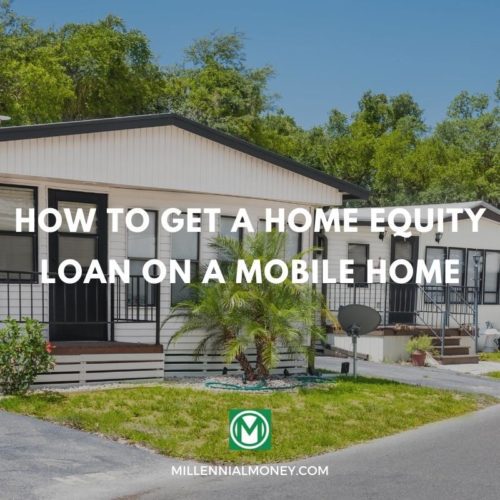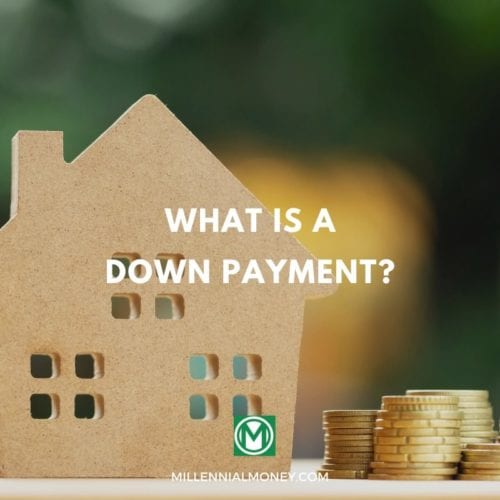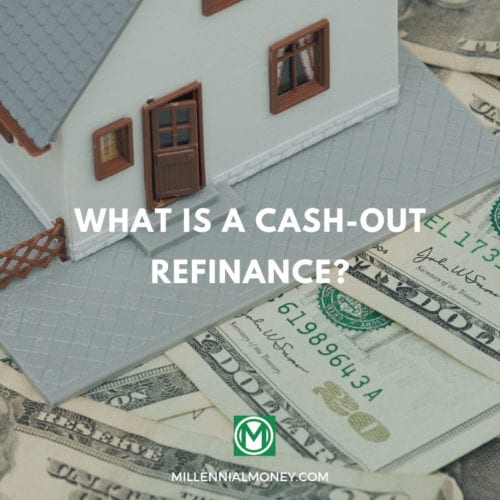Veterans Affairs (VA) loans are government-backed mortgages exclusively for veterans or current service members and their families. Like other types of government-backed loans, VA loans offer special perks that can’t be accessed by the rest of the US population.
The biggest advantage is that no down payment is needed, unlike conventional mortgages, making homeownership a possibility for those who might struggle otherwise. You’ll also get access to competitive interest rates and reduced fees.
Even if you don’t currently have a VA mortgage, it’s possible to refinance into one and reap the benefits.
The general process is very similar to refinancing a conventional mortgage, but there are a few key differences.
VA Refinance Eligibility Requirements
You might be wondering if you’re eligible to apply. Naturally, you must be either an honorably discharged veteran, a current active-duty service member, or a spouse of somebody who meets these criteria. Widows or widowers can also apply, but only if their spouse died in the line of duty, apart from other very specific circumstances. If you have any doubts about your eligibility, you can consult the VA website.
Once you know you fit the criteria, you must prove it to the lender. This is done by producing a Certificate of Eligibility (COE), which you can obtain quickly and easily through your lender when applying. If you already have a VA mortgage, you can use your original COE certificate.
There are no credit requirements set by the VA, but since lenders are giving out money, they may choose to set criteria themselves. It’s generally advisable to have a credit score of at least 620, or 580 at the very lowest. Furthermore, a debt-to-income ratio of 41% or below is preferable, or perhaps as high as 56%.
How Does VA Refinancing Work?
When it comes to VA loan refinancing, there are a few different types: a streamline refinance, a cash-out refinance, and a conventional to VA refinance. Each one has different rules, and some of them work drastically differently to conventional mortgage refinances.
Let’s look at each one in detail.
IRRRL (VA Streamline)
The Interest Rate Reduction Refinance Loan (IRRRL), otherwise known as a VA streamline, is a way of switching to a loan with a lower interest rate. For anyone who already has a VA mortgage but believes they could find better loan features with another provider, this is the VA refinance loan you need.
The good news is that refinancing a VA loan using an IRRRL is easier and simpler than refinancing a conventional mortgage.
Benefits of VA Streamline
One advantage is that all extra charges, such as closing costs, can be covered by the loan. This doesn’t mean that you won’t have to pay for closing costs at all, but if necessary, the interest rate will be increased to cater for the costs.
Because IRRRLs are only available for those who have already taken out a VA loan, you won’t need to go through the process of proving you’re eligible and applying all over again. This means you won’t need a new Certificate of Eligibility (COE)
You also won’t need documentation of income, verification of employment, or a credit report – the lender will just make sure you haven’t missed more than one payment over the last year. However, even though the VA doesn’t require these details, it’s within the rights of an individual lender to ask for them if they wish.
Finally, the home you’re applying for a refinance mortgage for doesn’t have to be your primary residence, unlike some other types of VA refinance loans. Nonetheless, you must be an occupant in the house and be able to prove that you have previously occupied there.
IRRRL Eligibility
There are a few simple requirements you must meet to take out an IRRRL, though. You can’t have made more than one late payment recently, you must be transferring from a VA to a VA refinance, and the switch has to result in either a lower interest rate or a fixed rate instead of an adjustable-rate. Finally, you’ll need a Certificate of Eligibility (COE) at least three days before you close the loan (as mentioned, this can be a previously used COE).
These terms shouldn’t be difficult for most people to meet, as long as you don’t have a poor credit history. If you want to lower your interest rate but don’t already have a VA loan, you must take out a conventional to VA refinance instead.
Cash-Out Refinance
If your main reason for refinancing is to free up some extra money rather than to improve your mortgage terms, you might want to consider a cash-out refinance instead. This allows you to pull equity from the property. Lost already? Home equity is the difference between the market value of a property and the amount you owe on your mortgage. Basically, it’s the value of your property that you actually own.
Whereas a conventional loan only lets you borrow up to 90% of the value of your house, a refinance VA loan allows you to take up to 100% of the value. You also need less equity in the home than is needed for conventional loans.
Therefore, if you’re considering taking out a loan to pay for your credit card debt, carry out a renovation project, or anything else, a VA cash-out refinance is almost always a better option. Naturally, the more your home is worth, the more cash you’ll receive.
Cash-Out Refinance Requirements
However, unlike an IRRRL loan, you’ll need a significant amount of documentation to apply, including paycheck stubs, W2 forms, and federal tax returns. Some lenders may also ask for a minimum credit score and an appraisal.
Another key difference is that the home you want to use the cash-out refinance on must be your primary residence.
Conventional to VA Refinance Loan
The only way to refinance a conventional loan with a VA Loan is through a cash-out refinance.
As mentioned, IRRRLs aren’t available for anyone who doesn’t already hold a VA loan. But just because you didn’t take out a VA loan originally, either because you weren’t in the military then or you didn’t think it was appropriate for you at the time, that doesn’t mean you can’t reap the benefits now.
Whether you have another government-backed loan, like an FHA, or just a conventional mortgage, you can refinance it into a VA loan if you wish. It’s a slightly more unusual loan to choose since most people take out a VA mortgage originally, but it can make a lot of sense.
Because the switch involves taking out a VA loan for the first time, you must prove your eligibility, including providing a COE. This makes the process slightly more complicated than that of an IRRRL, but it’s definitely worth it.
Switching to a VA loan can result in a lower interest rate, lower monthly payments, and help you avoid mortgage insurance payments, a common requirement of conventional loans, and especially FHA loans. VA loans also allow you to switch to a loan where no equity in the house is required, which can help you pay off other loans.
IRRRL Streamline vs. Cash-Out
Each type of VA refinance loan is designed for a specific scenario, but in case you’re still confused, let’s break it down further.
The IRRRL helps homeowners lower their VA loan interest rates and reduce their monthly repayments. So, if you already have a VA loan and this is your reason for wanting a refinance loan, then you should choose the IRRRL. Because it’s a simple switch, the process is quick and easy and involves a lower funding fee, plus the loan doesn’t have to be for your primary residence.
The cash-out refinance loan is for anyone who wants access to cash rather than lower interest rates. If you already have a VA loan and the reason you want to refinance is to tap into the equity of your home, a cash-out refinance loan is the right choice. Taking out this type of loan may incidentally help you lower your interest rate and monthly payment, but it isn’t its primary purpose.
If you know you meet the criteria for a VA loan, but you currently have a different kind of mortgage, such as an FHA loan or a standard mortgage, VA cash-out refinance is the way to go. Switching could help you lower your interest rate, your monthly payment, get rid of mortgage insurance, or access more equity.
Is it a Good Idea to Refinance a VA loan?
Refinancing a VA loan can bring various benefits, but it’s not the right choice for everyone. You need to make sure that the decision will help you gain more than you lose and that it makes sense, given the current economic climate.
If interest rates have dropped, it’s a great time to refinance your VA loan. The higher interest rates are, the more you have to pay each month – so if interest rates on the property markets drop and you stick to your current, higher interest rate, you’re paying more than you need to.
Similarly, if you’re currently in an adjustable-rate mortgage (ARM) and are nearing the end of your fixed-rate term, it’s a good point to switch to a reliably low rate. Most ARMs have a reasonably low interest rate to start with that increases over time, so be mindful of this, and don’t forget to switch over.
VA Refinance Isn’t Always the Best Option
There are also some disadvantages to refinancing VA loans. Even though VA loans usually involve fewer fees than conventional loans, that doesn’t mean they’re completely free to take out.
Also, most costs of a VA loan can be added to the total loan amount by increasing the payments or interest rate, but you’ll still have to pay them at some point. It’s easy to see that refinancing a VA loan for lower interest rates is counter-intuitive if you actually end up paying more because of the charges.
For cash-out loans, another consideration to make is that the value of your house could drop. In this case, you’d end up owing more money than your home is actually worth, which is an unfavorable position to be in. However, it’s much more common for house prices to rise than drop, so this isn’t a huge risk for most people.
It’s important to weigh up the costs and benefits involved in refinancing your VA loan. Although refinance calculations can be complex and time-consuming, it’s a step you can’t avoid. There’s no sure-fire answer for everyone when it comes to a decision as important as refinancing a VA loan.
VA Refinance Fees
Almost all mortgages come with fees. VA loans are no exception, even though they tend to have more favorable terms.
VA refinance loans require you to pay a VA funding fee, the size of which depends on the loan you take out.
For an IRRRL, the funding fee is 0.5% of the loan amount. This doesn’t need to be paid out of pocket – you can roll the charges into the total loan – but don’t let that distract you from the fact it’s an extra expense.
The charge rises to 2.3% of the loan amount for a VA cash-out loan, and if it isn’t your first VA loan and you apply for the cash-out, the charge increases again to a steep 3.6%. You can find the full list of fees here.
However, you may be exempt from paying the VA funding fee. The following groups of people don’t have to pay it:
- Veterans who are entitled to receive VA compensation for a service-related disability
- Spouses of anyone who died in service, from a service-related cause, or a currently disabled veteran received Dependency and Indemnity Compensation (DIC)
- Service members eligible for compensation due to a pre-discharge claim
- Service members who have received the Purple Heart before loan closing
You may also have to pay fees associated with conventional mortgages, such as a closing fee or an origination fee. This is at the discretion of the lender.
On the plus side, VA loans are exempt from private mortgage insurance. This is a huge saving compared to conventional and FHA loans, which require hefty insurance contributions.
Where Can I Refinance a VA loan?
To take out a VA loan, you must go to a VA-approved lender. As with any type of loan, it’s also helpful to get quotes from multiple lenders. The perfect loan provider for one person isn’t necessarily the best for everyone.
Quicken Loans Rocket Mortgage
Rocket Mortgage offers a wide range of mortgage options, including VA refinance loans. As the online offshoot of Quicken Loans, their main selling point is offering a completely online application process. Everything from uploading and signing documents to finding out your rates can be done from behind a screen.
Of course, in the case of a VA refinance loan, talking to somebody can be helpful – but Rocket Mortgage offers that, too. You can either phone a representative or use the online chat option, at flexible hours that fit in with your schedule.
With an impressive 96% approval rating from past clients and a 4.95/5 rating on the App Store, Rocket Mortgage has a great reputation and they pride themselves on their customer service.
Veterans United
If you’re looking for a VA loan specialist, Veterans United is a great option – they’ve been named the top VA lender in the country and have a 4.7/5 rating from past customers. Their website also has a section dedicated to educational resources to help the community embrace homeownership.
To start the process, you can either talk to an expert over the phone or check your quote online. Although a generic rate checker might not be suitable for VA refinance loans on most lenders’ websites, Veterans United provides a process tailored to veterans, making it more accurate for your needs.
FAQ
What is a VA cash-out refinance?
A VA cash-out refinance loan is a way to access some of the equity in your home. You can take out a new mortgage where you’ll keep part of the money yourself and have a new, larger mortgage. This is useful because, instead of taking out a personal loan when you need some extra money, you can access part of the value of your house at a lower cost.
How much can I borrow in a VA refinance loan?
There are no hard limits set by the VA about how much individuals can borrow when taking out a VA refinance loan. However, lenders can set their own restrictions based on how risky an investment they deem the borrowers to be.
The basic entitlement for a VA loan is $36,000 with no down-payment, and most lenders will lend up to four times this amount. With a significant down-payment, the amount lent out will increase, especially if you have a strong credit score and income. The exact amount you can borrow also depends on your county – if you live in a place with expensive properties, you’ll be able to borrow more.
How long do you need to serve in the military for a VA refinance loan?
Depending on which part of the military you served in, the requirements vary slightly. You should have either served for 90 consecutive days during wartime, 181 days of active service during peacetime, or 6 years in either the National Guard or Reserves. If you’re the spouse of a service member who died while on duty or from a related injury, you’ll be eligible even if they served for less time.
A VA Refinance is Simple & Saves You Money
There are lots of good reasons to refinance a VA loan, and it might just be easier than you think. If you already have a VA loan but want to refinance it, the process is a lot simpler than applying for a new mortgage. Even if you currently have a conventional loan, converting it to a VA loan isn’t overly difficult.
The benefits of making the leap are clear. Whether you want to lower your monthly payments and interest rate, escape monthly insurance payments, or access a greater percentage of your home as equity, refinancing a VA loan can help you achieve it. As soon as you start speaking to a VA lender, you’ll realize how simple, yet worthwhile, the move is.





No comments yet. Add your own